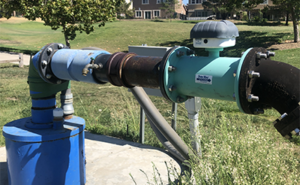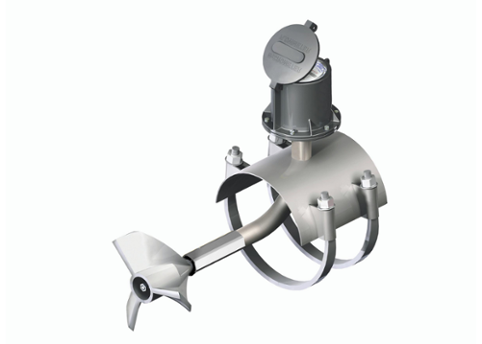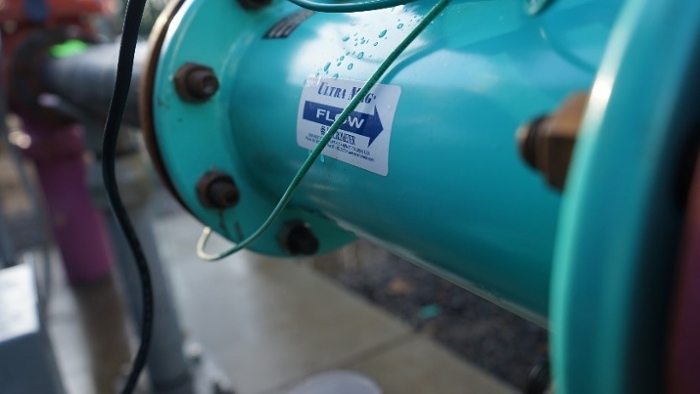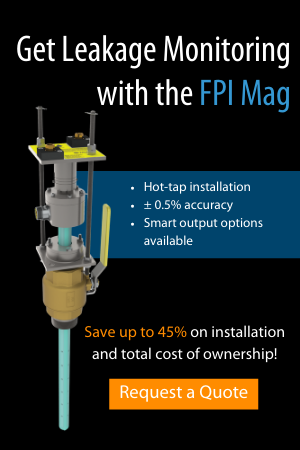Flow Meters for Agriculture Applications: An Overview
The changing regulatory environment has made flow meter implementation more popular in many agricultural and turf irrigation applications. Meters have gotten a negative reputation because historically, they’ve been implemented only when resources are limited, and allocation is necessary. Despite the regional and federal mandate to meter and maintain compliance with water rights, McCrometer doesn’t manufacture regulatory devices – we make flow measurement and management devices.
While growers and irrigators may be required to report water usage, the greatest benefit of a McCrometer flow meter is experienced in day-to-day flow management. Outside of mandated metering, there are a variety of ag applications where a flow meter can become a beneficial and integrated part of your automated agtech system.
Surface Water and Crop Irrigation
Rivers, ponds, or other surface water sources are popular applications for flow meters, as are meters measuring water pumped from wells. Measuring water applied to crops, especially in combination with weather stations, soil moisture sensors, and other irrigation equipment like center pivots, can help growers get the most crop for the least amount of water. This affects every grower’s bottom line, as flow optimization saves on costs to pump water and run irrigation equipment, as well as stay within water allocations if present.
For more information on flow meters operating as an important part of your integrated farm operations system, check out this article about utilizing flow meters as data management tools.
Flow Meters for Dairy Lagoons
Dairy lagoon flow applications typically have meters measuring the amount of waste stream coming out of the dairy, as waste produced is often regulated. However, in addition to being regulated, dairy waste can also be a management application. Producers can opt to have a lab analysis conducted on the lagoon waste to evaluate it as a nutrient source for farm field fertilization, turning a waste source into a nutrient source!
A flow meter is installed in the pipeline out of the lagoon or at the applicator at the farm fields, as precise measurement is needed. Growers use an agronomic rate to apply the dairy waste to farm fields based on either hundreds or thousands of pounds per acre. Accuracy and durability are of utmost importance for a flow meter in this application, and an electromagnetic (mag) meter like the Dura Mag® or the Ultra Mag® are ideal. These mags have McCrometer’s proprietary UltraLiner™, a fusion-bonded epoxy with a lifetime warranty against delamination or tearing, perfect for an ag application measuring a flow containing chemicals and particulates that can be corrosive.
Flow Meters for Golf Courses and Park Management
Similar to the irrigation methods of a farm field, a golf course or park has a given area that needs applied water, usually in the form of sprinklers that typically need a specific amount of flow to operate correctly. Parks and courses require a precise amount of water applied to a predetermined area, over a certain amount of time – nobody likes a golf course with brown spots! To maximize usage, operators often plan to apply smaller amounts of water more frequently, which makes application efficiency even more important.

A Dura Mag at a Southern California golf course.
For applications like these, the Dura Mag is often the best choice flow meter, as its lack of moving parts and battery-power options are popular with customers. There are a lot of sprinklers and a lot of real estate to cover, making the Dura Mag’s pulse-out capabilities ideal for operators managing a control system and needing the totalization and flow rate without having to manually check the meters.
Ag Flow Meters Geographically
Applications vary depending upon location; in the Midwest, there is more groundwater used for irrigation, and less surface water. In that region, irrigation and conservation districts require flow meters because agricultural development often exceeds the sustainable supply of water resources.
Outside of the Midwest, agriculture varies quite a bit. Vineyard and orchard drip and micro irrigation are popular in California – the metering concept is similar to surface water irrigation, but the delivery is much smaller. Growers can use drip irrigation processes to improve groundwater recharge; by importing water through surface water irrigation systems, growers can divert the excess to improve groundwater recharge of the aquifers.
Flow Meters for Expense Management
No matter the geographic location, an irrigation system is an expense. Ag production regardless of the crop is expensive; growers pay for water pumped from the ground or from a water source, and that pumping has electricity costs. Running other irrigation equipment like center pivots or sprinklers has expenditures as well, and they add up. A flow meter can assist with monitoring systems and operational costs, saving both water and money.
California’s metering is limited currently, but likely will be expanding as the need for water use reporting becomes more widespread. If growers and irrigators don’t have flow meters to report water usage, they’ll need to resort to an estimation system, such as power coefficients. Through this method, irrigators reference an electricity bill and estimate water usage based on kilowatt hours and pumping capacity. You end up erring on the high side, which is inefficient. An exaggerated estimate is an inflated cost and ultimately affects your bottom line.
The Right Flow Meter for You and Your Flow Project
Despite varying geographic regions and application types, the best kind of flow meter is the one that is customized to meet the unique demands of your flow project.
Whether that’s a mag meter or propeller meter, the McCrometer team of experts can recommend a meter that helps you achieve your project goals, whether that may be automated data collection for accurate reporting, or system integration for more control over your daily management (or both!)
For more information, reach out to get a quote for your project, or learn more about our agricultural and turf flow meters on our website.
Related Posts
Featured Posts
Get into the Groove: McCrometer’s Grooved-End Mag Meter
We’ll share the big news upfront! McCrometer’s integrated grooved-end mag meter is the only version on the market, and it’s revolutionary for a reason. Engineered to meet customer demand, this meter launched in January 2024 and is available for order now. This...
Produced Water and Blending Flow Meter Use Case
Produced Water is a byproduct of oil production. Whether it is a byproduct of flow back or the water component of the oil separation process, produced water can be a difficult measurement point but is a very important part of the process. Several parameters make it...
Get your Groove on Now: McCrometer’s Grooved-End Mag Meter Now Available
It is time to get your Groove On. McCrometer has released their innovative Electromagnetic Flow Meter with integrated Grooved End connections. Are you tired of bolting on extra flanges with Victaulic end connections welded to them? It is time consuming and makes an...
Request More Information








